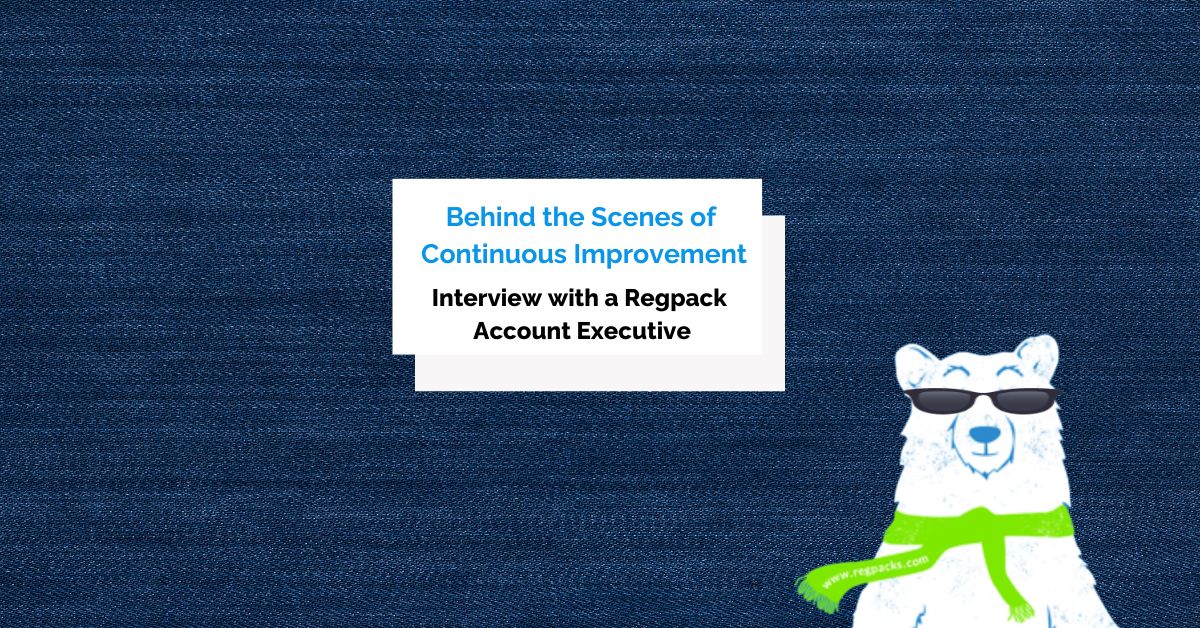As an after-school program director, you know it’s essential to get the word out about your club.
Unless you’re operating in a small town, there are likely other after-school programs out there competing with you for participants.
An effective marketing strategy shows students and parents why your program is the right choice compared to the competition.
In this article, we’ll give you a step-by-step guide to marketing your after-school program.
Your promotion process should demonstrate your unique value, build awareness and trust within the community, and make registration easy.
- Define Your Value Proposition
- Be Active in Your Local Community
- Partner With Local Schools
- Offer Incentives for Referrals
- Optimize Your Website for Search Engines
- List Your Program on Google My Business
- Engage With Prospects on Social Media
- Stand Out From the Competition With an After-School Program Marketing Plan
Define Your Value Proposition
Every after-school marketing plan should begin with a well-defined value proposition.
The program’s unique value is something prospective students can’t find anywhere else—so when marketed correctly, it’s the most powerful draw for students and parents alike.
To find your unique value proposition, after-school program directors should perform a SWOT analysis, or a systematic review of your strengths, weaknesses, opportunities, and threats.
The system works well because it takes both positive and negative aspects into account when considering your internal and external values.
To conduct a SWOT analysis, ask yourself the following questions about your after-school program management:
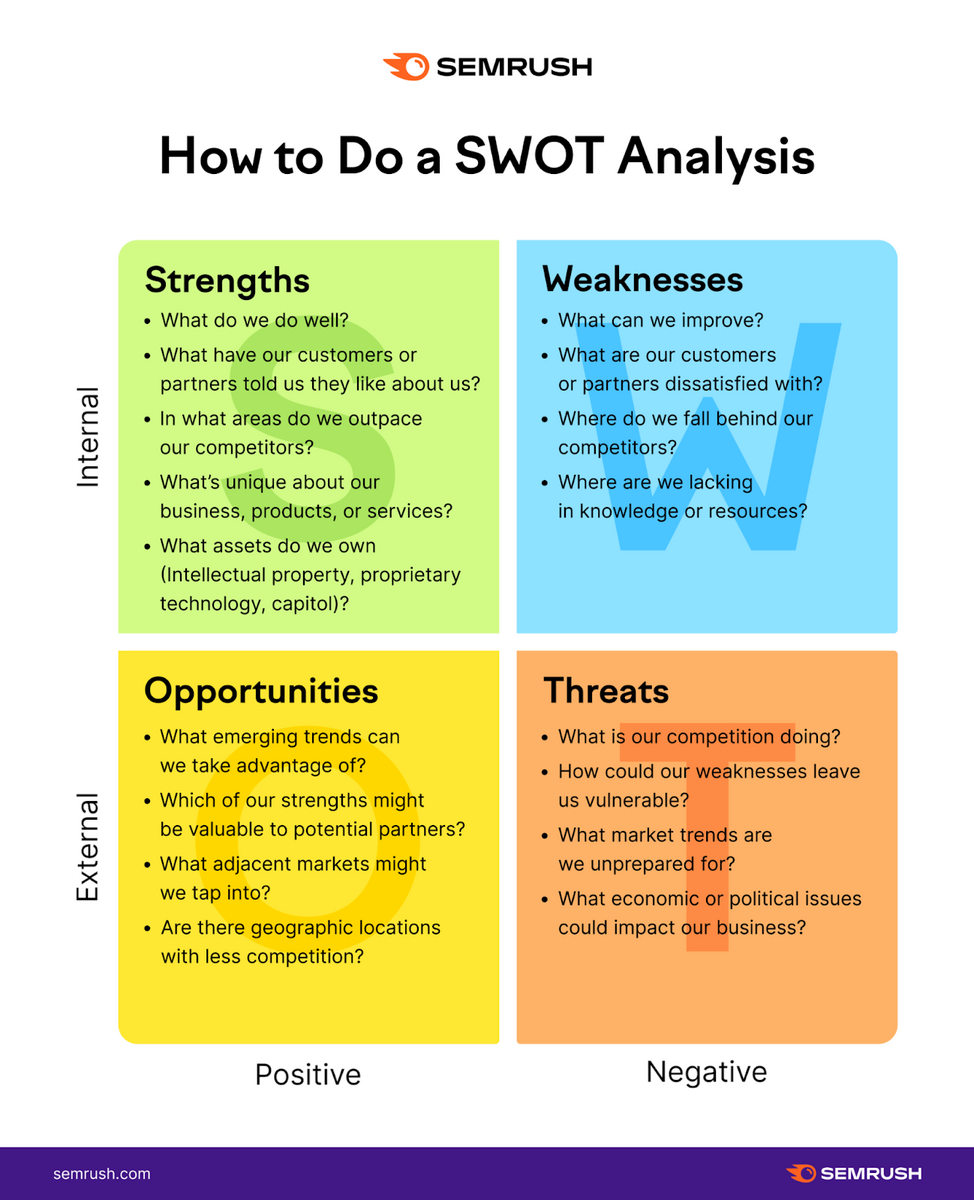
Source: Semrush
After conducting this review, you should have a much clearer idea of where you fit into the broader market, who your ideal audience is, and the best way to communicate with them.
Be Active in Your Local Community
Especially if your after-school program is relatively new, getting involved with your community is one of the most powerful ways to get the word out.
Most prospective students will come from the same town or city the after-school program is situated in, so it makes sense to market your program through involvement in local events and venues.
Participating in community events allows after-school program directors and staff to meet prospective students and parents.
You can hand out flyers like these, and post them around the community where prospective students and parents are most likely to see them:

Source: Bethel-Hanberry Elementary
But your local engagement shouldn’t end with handing out flyers. Find local events and come up with ways to support them.
Set up booths at fairs, hand out Gatorade at sporting matches, and lend a helping hand at volunteer meetups.
Community events that provide the best opportunity to market your school and engage with your target students include places where children and families will be present, like:
- Community outreach events
- Youth sports games and tournaments
- County fairs
- Local 5K and 10K races
- Family-friendly concerts and performances
Community involvement isn’t limited to physical events, either. You can promote your program through ads in your local newspaper and on TV and radio stations in your area.
And getting your program listed in local information guides and directories is another great way for parents in your area to find you.
Research the most popular ways parents in your area find childcare-related information before investing in advertisements.
Partner With Local Schools
While it’s important to be active in your community at large, it’s especially important to invest time in your local schools.
That’s where all your prospective students are, after all—so why not market your program right at the source?
Many schools are happy to partner with after-school programs, since it’s beneficial to both sides.
While your program is getting more exposure, the school is providing additional resources and support for its students.
Statistics show that after-school programs improve student behavior, academic results, and attendance.
According to one study, participation in after-school programs can drastically improve the achievement gap between high-income and lower-income students.
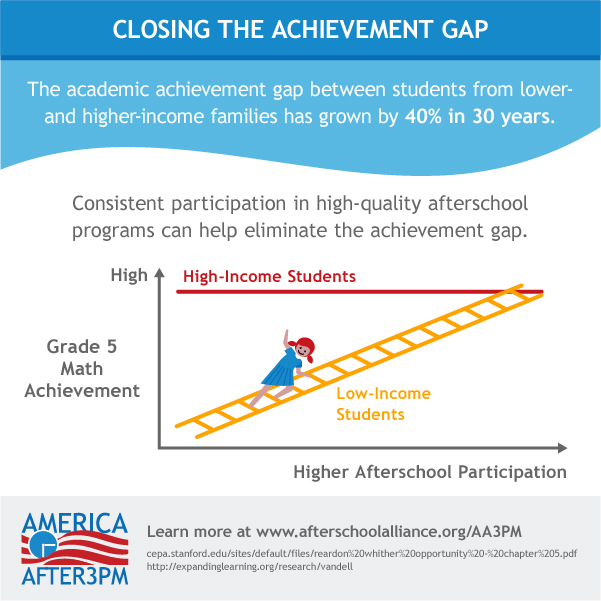
Source: Massachusetts After-School Partnership
Why wouldn’t a school want to promote services that improve student success and test scores?
To increase exposure among target students, contact your local schools and present ideas for promoting your after-school program.
Examples of great ways to partner with your local schools include:
- Distributing the after-school program’s flyers to students and parents
- Promoting the program in the school’s newsletter, website or prospectus
- Setting up a booth for the program at a school fair
- Introducing the program at a parent-teacher meeting
The school and you as the provider of the after-school program both benefit from such an approach.
Offer Incentives for Referrals
Awareness is one thing, but your goal goes beyond name recognition. You actually want new students to enroll—so what’s the best way to increase student enrollment?
Parents are more likely to enroll their children in an after-school program if it was recommended to them by someone they trust.
That’s why word-of-mouth marketing is crucial.
Marketing strategist Jacob McMillen defines word-of-mouth marketing this way:
To put it most simply, word-of-mouth marketers and advertisers seek to create something worth talking about and then actively encourage people to talk about it.
Creating something worth talking about usually involves generating exciting incentives to do so.
If your after-school program has the budget, consider establishing a referral program where parents of enrolled students will receive a small discount for referring others.
You can decide how to structure your incentive—like a discount, gift cards, or even donations to the child’s school or other charitable causes.
Or you can use a mixture of direct and indirect rewards like Connections Academy, a tuition-free K-12 online school, does:
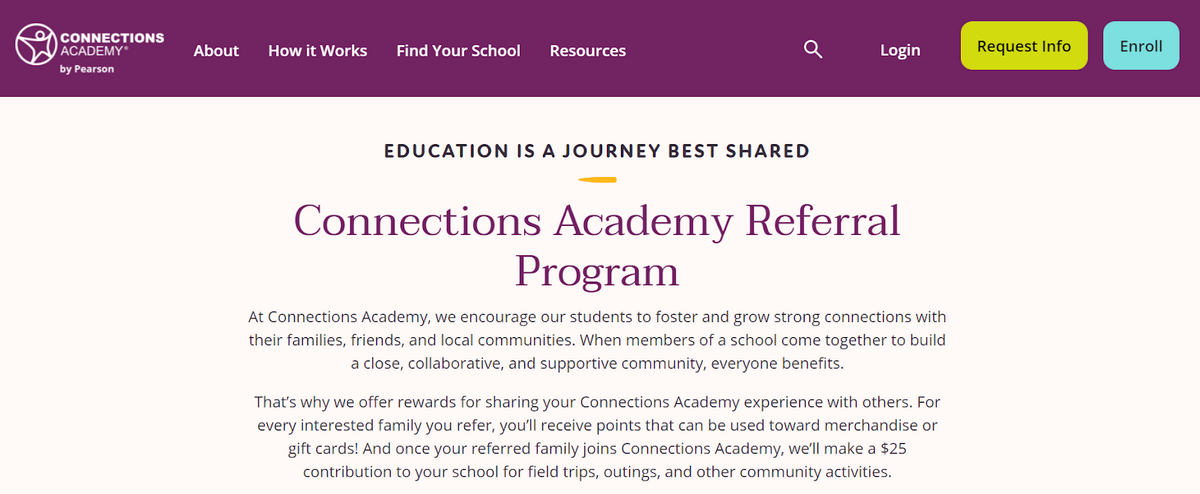
Source: GrowSurf
By offering rewards for both referrals and enrollment, this school provides an effective incentive program for word-of-mouth marketing.
Optimize Your Website for Search Engines
While it’s crucial to promote your program in person through local events and in partnership with local schools and current parents, don’t neglect your online presence.
If you don’t already have a website, create one. A website is absolutely essential in today’s business environment.
It’s your home base where prospective students and parents can learn more about you, find contact and pricing information, and begin the enrollment process.
For best results, your website should be optimized to rank higher in search engine results and be more discoverable by prospective students and parents.
It should be easy to navigate, modern, and look great on mobile devices.
Conduct keyword research to learn your target audience’s most-searched terms—then publish relevant content that takes advantage of those keywords.
But it’s important to remember that while attracting more website visitors is great, registration is your ultimate goal.
So while you’re optimizing your after-school program’s website for marketing purposes, don’t forget to optimize your online registration process at the same time.
The best strategy for optimized registration is to choose registration software that works directly within your website.
Regpack, for instance, offers embedded registration forms so that parents who find the website can register their children immediately without needing to navigate to another platform.
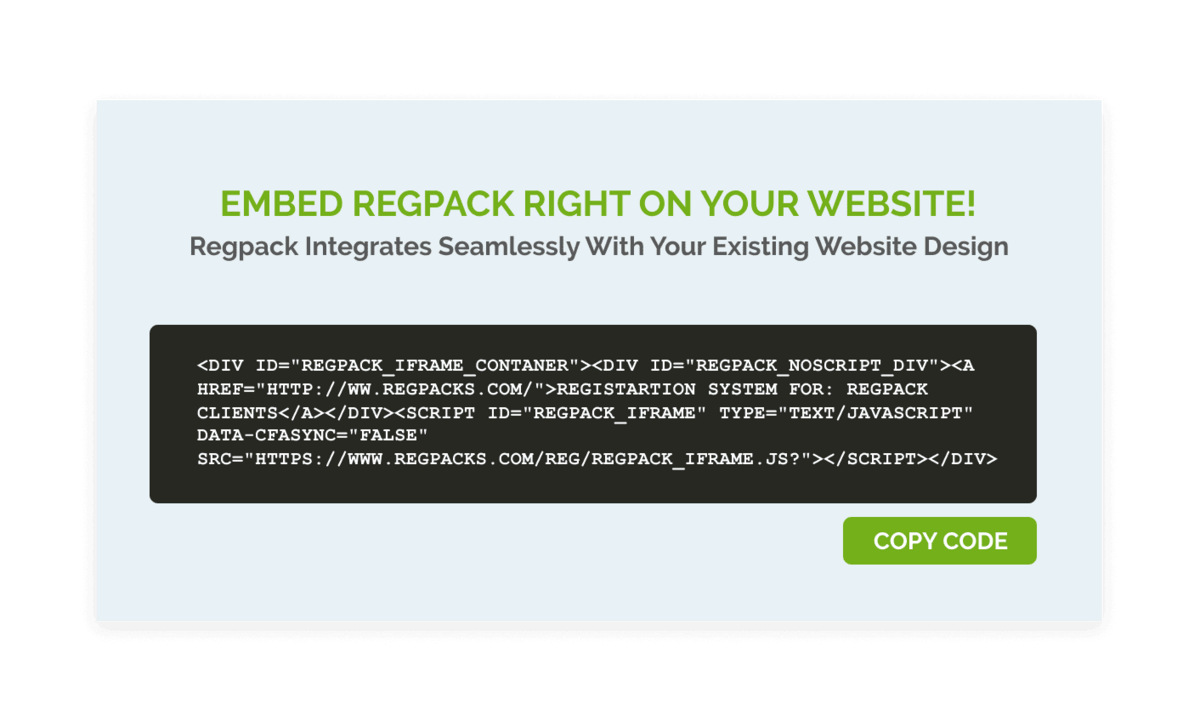
Source: Regpack
To learn more about creating registration forms that convert, check out our article: How to Optimize Your Registration Forms and Increase Signups.
List Your Program on Google My Business
To maximize online views and brand exposure, your after-school program should be highly visible online—especially in local searches.
Not only should you optimize your website for search, but you need a strong Google My Business listing as well.
When searching for an after-school program, most parents turn to Google. They might search for “after school program Dayton” or “daycare after school near me”.
Here’s what that first search turns up:
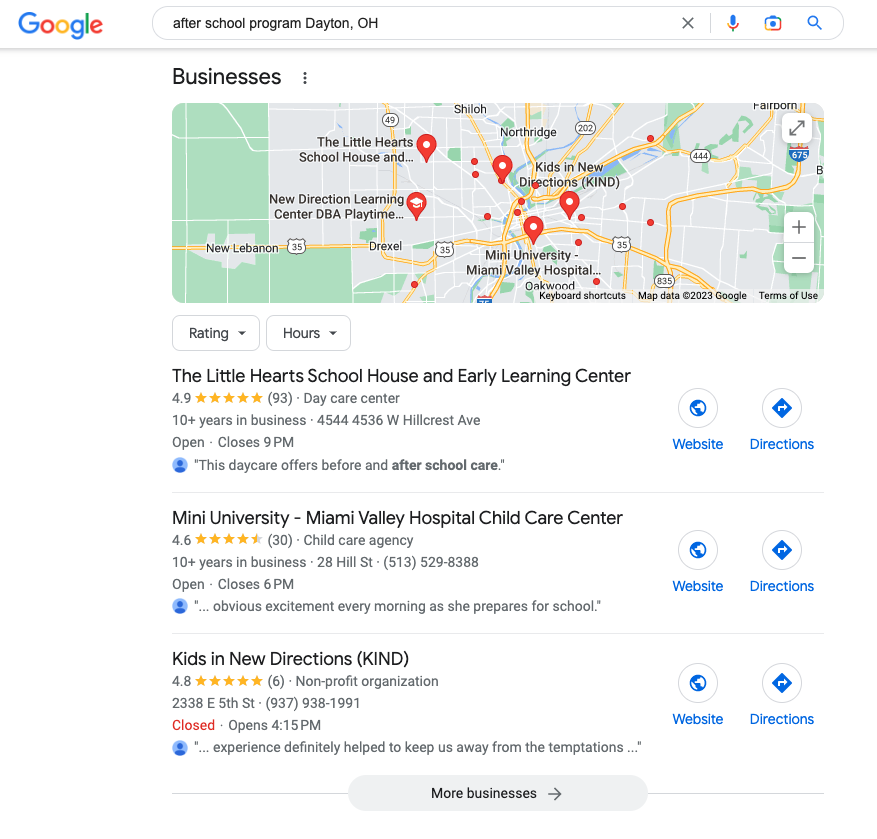
Source: Regpack
Google My Business listings like the ones above make it more likely that a casual searcher will consider these programs first.
Listing your after-school program on Google My Business is free and makes it easy for anyone looking for a local after-school program to see information like your:
- Address
- Phone number
- Business hours
- Website link
One caveat, however: if you’re renting your business location, it may not qualify for a Google My Business account unless it meets specific criteria.
For example, according to Google’s guidelines:
Businesses showing their address on Google should maintain permanent fixed signage of their business name at the address.
Therefore, make sure your business qualifies for a Google My Business account before creating one.
Engage With Prospects on Social Media
Since most—if not all—of your prospective students and their parents are active on social media, no educational marketing strategy is complete without a social media marketing plan.
Social media is an excellent, free tool for engaging with current and prospective students and their parents.
Create social accounts for your program on the platforms your prospects use most.
This is where really understanding your value proposition and your audience comes into play; what platforms will best show off your strengths?
Which platforms attract your specific audience?
For example, if your program’s primary age group includes 2nd- through 5th-graders, your main audience might be parents in their 30s and 40s.
These parents are likely to be found on Instagram and Twitter.
On the other hand, if you’re trying to engage with high-school students, you’re going to have better luck on TikTok, Instagram, and Snapchat.
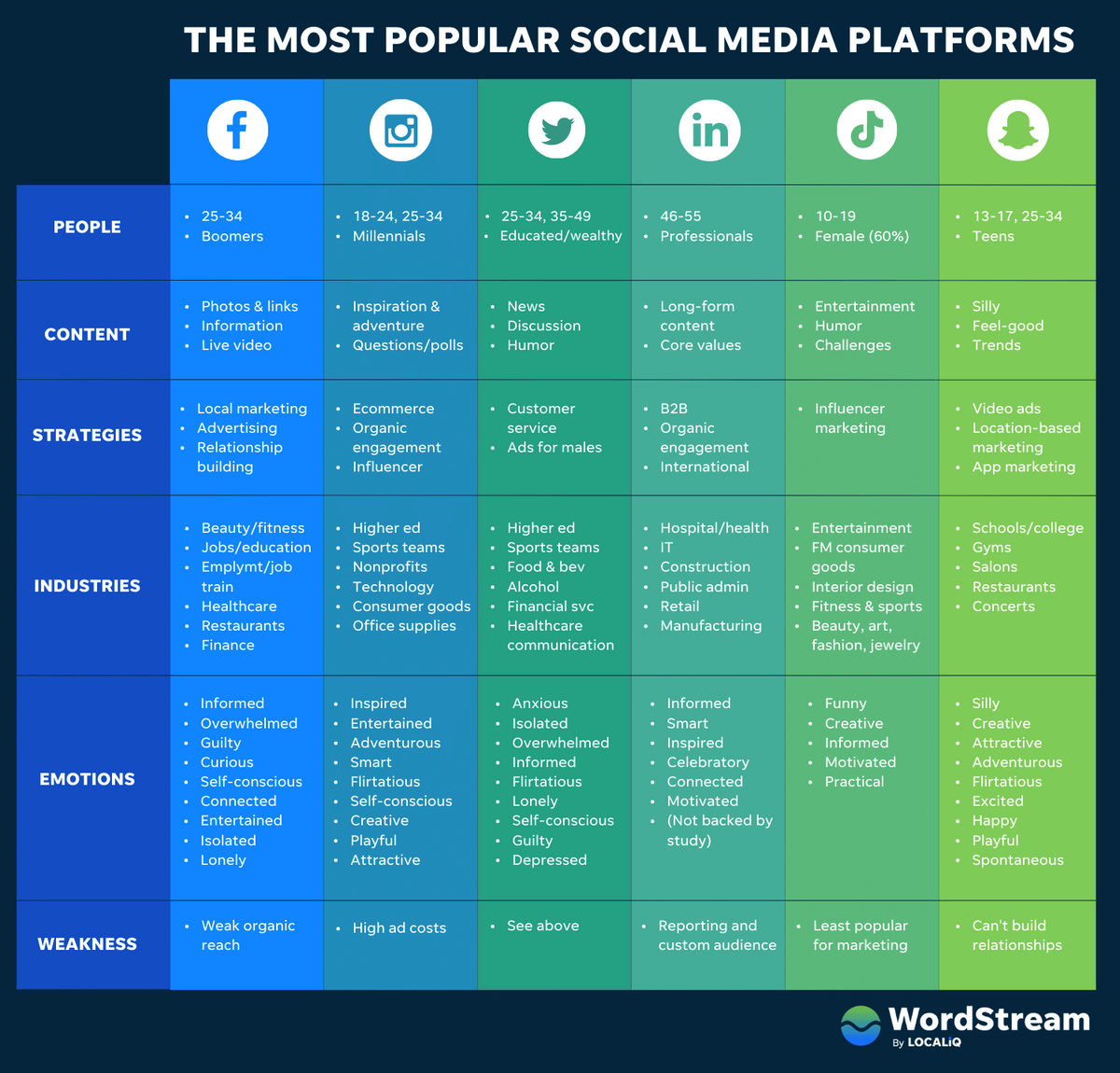
Source: Wordstream
Once you’ve chosen a platform or two to focus on, start posting content on social media that showcases your program.
And don’t forget to engage with those who respond to your posts—a consistent and engaged presence online helps boost your visibility and build authority within your community.
Stand Out From the Competition With an After-School Program Marketing Plan
Your program offers an essential service to the children of your community—so it can be difficult to think of it as a brand.
But like any business, your after-school program needs an effective branding and marketing strategy if it’s going to succeed.
Start by defining what makes your after-school program unique. What’s your value proposition—and relatedly, who is your target customer?
Then, start getting involved in your local community. Attend local events, hand out flyers, and partner with local schools to demonstrate the value you provide to your neighborhood.
Offer incentives for referrals from current students to generate word-of-mouth marketing.
Then, build a digital marketing strategy. Curate a robust and inviting social media presence to build brand awareness and establish relationships with your community.
Claim a Google My Business listing and optimize your website for search—and choose after-school registration software that optimizes the enrollment process.
You don’t want to lose prospects at the last moment because their registration experience is slow or frustrating!



